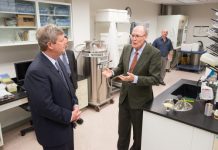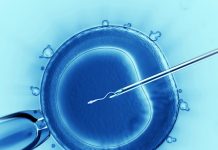In vitro fertilization is usually called as IVF. Generally, it is the method of fertilizing an egg with sperm in the laboratory dish.
Once in vitro fertilization is successful then it is combined with a method called as embryo transfer. This procedure is used in order to set the embryo in your uterus.
In vitro fertilization – What is there in the process?
In vitro fertilization and embryo transfer basically consist of five steps. They include:
- Monitoring and stimulating the production of a healthy egg in the ovaries.
- Collecting the egg
- Securing the sperm
- Combine the egg with the sperm in the laboratory and offer the suitable environment for fertilizing and for the growth of the embryo.
- Embryo transferring into the uterus
Step 1: Prescribed fertility medications used to control the period of egg ripening, also, they increase the chance to collect more eggs during your menstrual cycle. Often, this procedure is called as ovulation induction.
The reason behind the need of multiple eggs is most of the eggs will not fertilize after the retrieval. The development of eggs is monitored by using ultrasound. This test helps to check your ovaries and urine.
Step 2: During the 2nd step, egg retrieval takes place by using a surgical procedure. This procedure uses ultrasound imaging to help guide the hallow needle into the pelvic cavity.
In order to remove any discomfort, local anesthesia will be given. By using a hallow needle, the eggs will be removed. This procedure is called as follicular aspiration.
Most of the women may experience mild cramping during retrieval. Also, you will feel full for all the time and experience pressure for several days.
Stage 3: During ejaculation, sperms are extracted and one sperm can be taken to combine with the eggs.
Step 4: With the process of insemination, the eggs and sperms are located in the incubator in a laboratory which leads to fertilization.
During the cases, when fertilization is low then intracytoplasmic sperm injection can be used. In this procedure, a sperm is directly injected into the egg for fertilization.
Step 5: After the fertilization, embryos are transferred into your uterus, anywhere from one to six days later, but usually this happens between 2 to 3 days after the egg retrieval. During this time, the fertilized egg separates to become a 2-4 cell embryo.
There is a speculum in the transfer process and is inserted into the vagina to represent the cervix. The embryos which are blocked into the fluid are gently installed into the womb by using a catheter.
Ultrasound is the basis for this process. You won’t experience any pain during this procedure, but some of you experience mild cramping.
In vitro fertilization is successful to how much extent?
|
IVF Success Chart |
|
|
Age |
Success rate |
|
<35 |
30-35% |
|
35-37 |
25% |
|
38-40 |
15-20% |
|
>40 |
6-10% |
The success rate of this procedure depends on various factors like patient’s characteristics and treatment approaches.
Are there any risks associated with in vitro fertilization?
Similar to other medical procedures, this procedure also has some risks. The risks are associated with each step of IVF. The risks include:
- Ovary stimulation can cause hyperstimulation. In this case ovaries become swollen and painful.
- Usually the condition of Ovarian Hyper stimulation Syndrome is a rare and mild. It has the side effects of vomiting, nausea, lack of appetite or feeling bloating.
- The most severe symptoms include: Decreased frequency of urination, shortness of breathe, severe nausea and vomiting, chronic abdominal pain, and gaining 10 pounds within 3-5 days.
You need to discuss with your doctor about in vitro fertilization, when you are going to take such as big step in your life.






